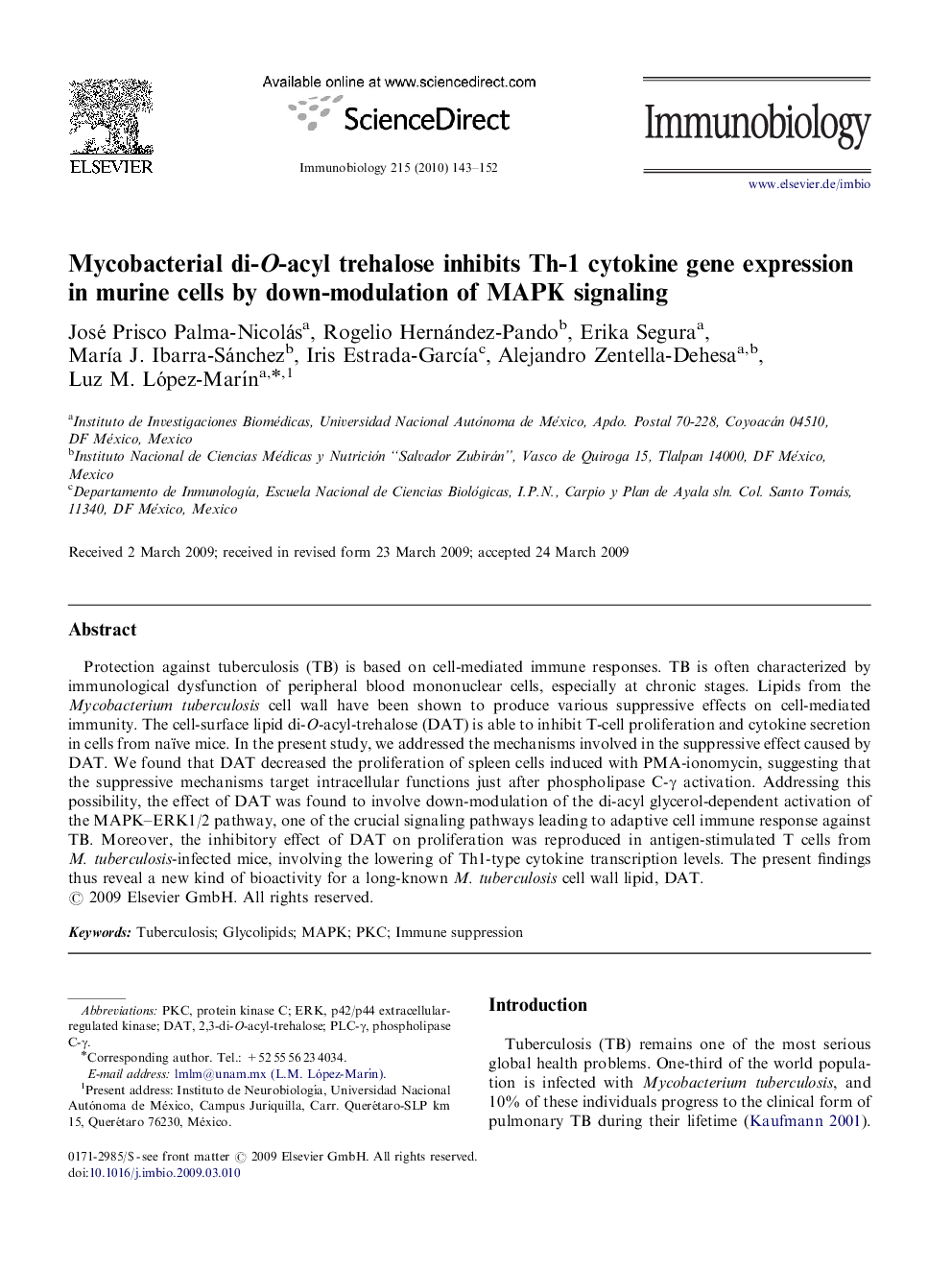| Article ID | Journal | Published Year | Pages | File Type |
|---|---|---|---|---|
| 2184095 | Immunobiology | 2010 | 10 Pages |
Protection against tuberculosis (TB) is based on cell-mediated immune responses. TB is often characterized by immunological dysfunction of peripheral blood mononuclear cells, especially at chronic stages. Lipids from the Mycobacterium tuberculosis cell wall have been shown to produce various suppressive effects on cell-mediated immunity. The cell-surface lipid di-O-acyl-trehalose (DAT) is able to inhibit T-cell proliferation and cytokine secretion in cells from naïve mice. In the present study, we addressed the mechanisms involved in the suppressive effect caused by DAT. We found that DAT decreased the proliferation of spleen cells induced with PMA-ionomycin, suggesting that the suppressive mechanisms target intracellular functions just after phospholipase C-γ activation. Addressing this possibility, the effect of DAT was found to involve down-modulation of the di-acyl glycerol-dependent activation of the MAPK–ERK1/2 pathway, one of the crucial signaling pathways leading to adaptive cell immune response against TB. Moreover, the inhibitory effect of DAT on proliferation was reproduced in antigen-stimulated T cells from M. tuberculosis-infected mice, involving the lowering of Th1-type cytokine transcription levels. The present findings thus reveal a new kind of bioactivity for a long-known M. tuberculosis cell wall lipid, DAT.
